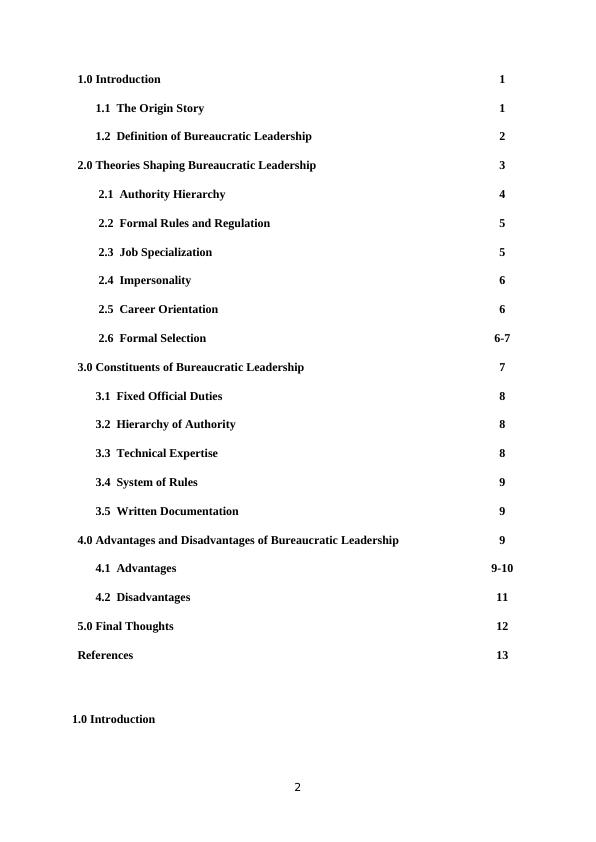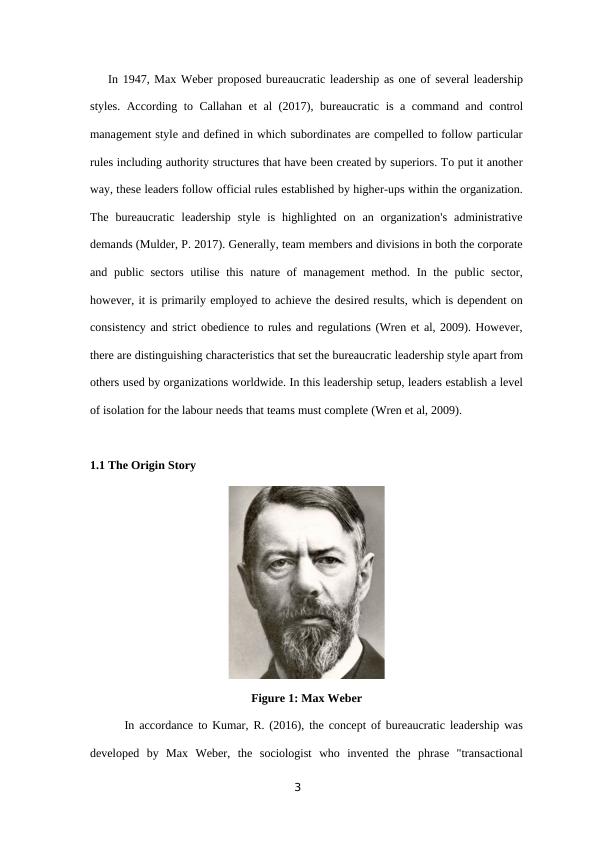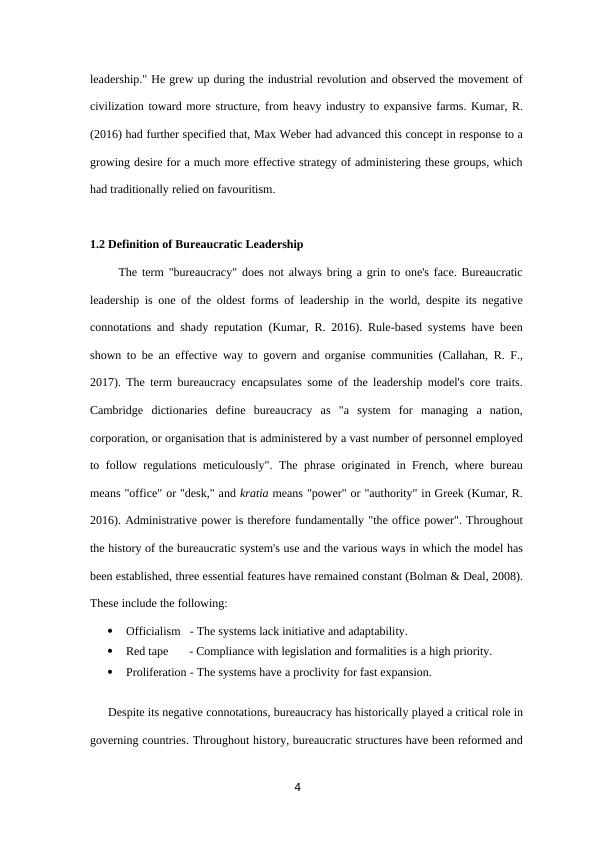Ask a question from expert
The Nature of Leadership And Bureaucracy- GMGM 5063
17 Pages4348 Words72 Views
Universiti Utara Malaysia
Added on 2022-07-14
About This Document
A bureaucratic leadership style was proposed by Max Weber in 1947 as one of several variations of leadership. It is a command-and-control management style characterized by subordinates being compelled to follow rules and authority structures that have been established by superiors. Callahan et al (2017) define bureaucracy as a command-and-control management style. Another way to say this is that these leaders adhere to rules made by higher-ups within the organization.
The Nature of Leadership And Bureaucracy- GMGM 5063
Universiti Utara Malaysia
Added on 2022-07-14
BookmarkShareRelated Documents
End of preview
Want to access all the pages? Upload your documents or become a member.
Social Theory and the Substantive Problems of Sociology
|26
|5849
|22
Leadership and Management in a Service Industry
|10
|3591
|339



